African Americans in NIST History
NIST (and the National Bureau of Standards, as we were previously known) has been fortunate to be home to many African American scientists, administrators and staff who have made lasting contributions to the mission of this institution — from Dolphus Milligan and Reatha Clark King to Willie May, who worked at NIST for more than 40 years, ultimately serving as the first African American NIST Director.
Below, we highlight a small number of those individuals who have contributed to our great past and helped set the stage for our incredible present and future. Also make sure you check out the first-person stories in the videos at the bottom of this page.
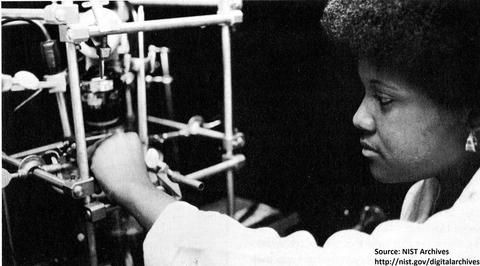
Jacqueline Avin
City College of New York student Jacqueline Avin took part in NIST’s summer undergraduate student research program in 1975. She was assigned to NIST’s Institute for Materials Research where she studied polymers used in hip and knee replacements. This experience likely influenced her decision to attend medical school, and she went on to have a long career as a physician.
(Are you a student yourself who is interested in science, engineering and mathematics? The NIST SURF program still exists! Find out more.)
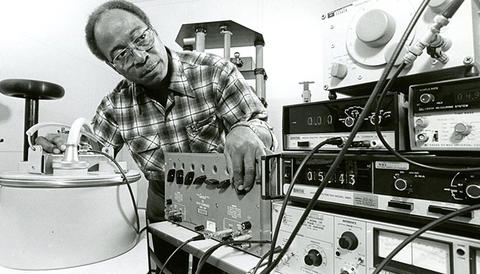
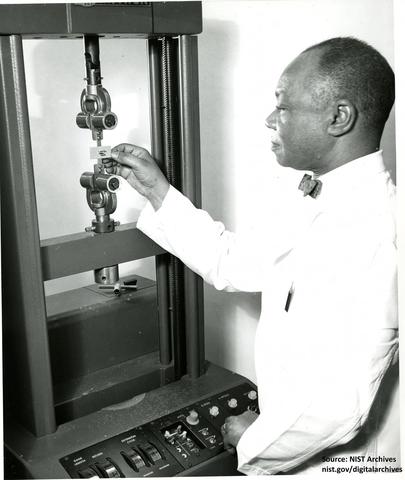
Thomas Carter
Thomas Carter of the NIST Materials Evaluation Laboratory performing a slit-tear test on a leather sample in 1965.
Carter led NIST efforts to evaluate different test methods for the strength of leather. Industry relied upon the accuracy of these test methods to determine if raw leather had the durability to withstand stresses during the manufacture of footwear, clothing, and upholstered products.
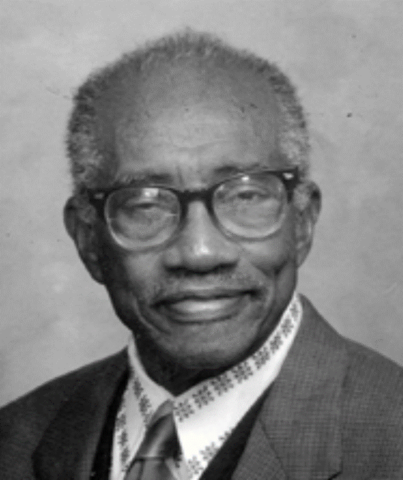
Vernon Dantzler
NIST mathematician and computer programmer Vernon Dantzler started off in a very different career... that of a professional baseball player; a star shortstop in the Texas circuit of the Negro Baseball League in the early 1940s. Dantzler also had a degree in mathematics from the Tuskegee Institute, and would later earn a graduate degree in the same field from American University.
He joined the National Bureau of Standards in 1947 as a mathematician in the Mineral Products Division, conducting research on concrete.
By the early 1960s he had become interested in computer programming. Dantzler wrote many of the subroutines for what became the NIST OMNITAB program. This computer program, first released in 1966, is considered one of the earliest spreadsheet programs.
Vernon Dantzler retired from NIST in 1977, and passed away at the age of 89 in 2004.
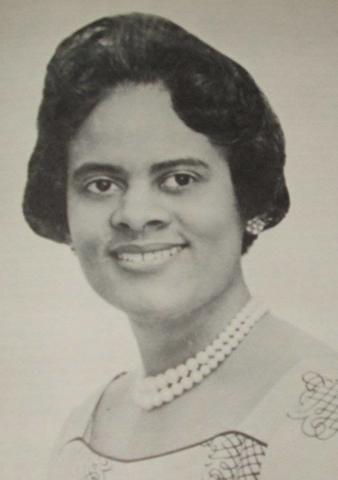
Evelyn Boyd Granville
Evelyn Boyd Granville received her Ph.D. in mathematics from Yale in 1949, becoming only the second African-American woman to have earned an advanced math degree in the United States.
Granville had worked at NIST as a summer student during college, and she re-joined NIST in the 1950s to work on mathematical problems related to missile electronics. She later worked in the private sector developing computations and computer programs for NASA space missions. Granville spent the remainder of her career as an academic in California and Texas before retiring in the 1990s.
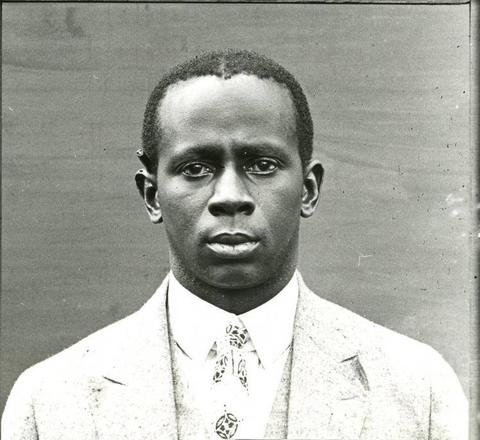
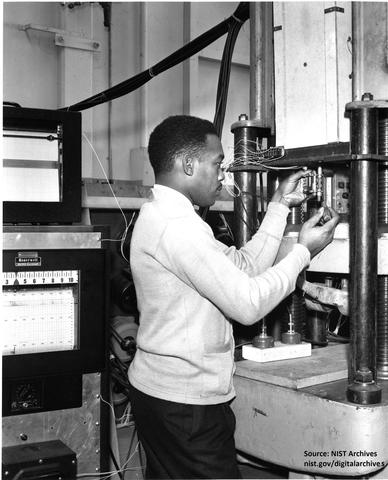
Nixon Halsey
Nixon Halsey of the NIST Engineering Mechanics Laboratory, in 1959, installing instrumentation to measure the time-dependent deformation of NASA rocket and aircraft structural parts under load and at high temperatures.
Halsey also tested materials used in communications towers, satellite dishes, and hazardous liquid containers during his 26-year career at NIST.
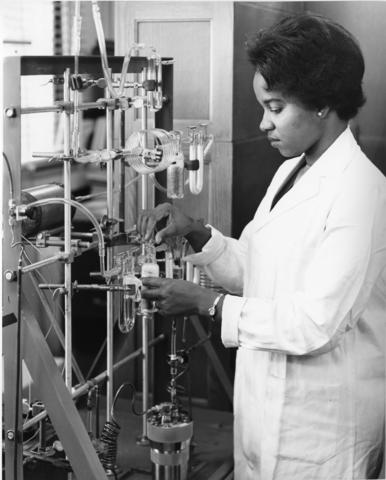
Reatha Clark King
Reatha Clark King was the National Bureau of Standards first African American female chemist. She has a B.S. from Clark College, an M.S. and Ph.D. from University of Chicago and an M.B.A. from Columbia University.
Working in the 1960s, NIST chemist Dr. Reatha C. King invented a device for cooling hot liquids, which NASA later adapted for rocket fuel systems linings. NASA also used methods she discovered for containing oxygen difluoride, a highly corrosive oxidizer.
Since then, she has held directorships at many companies and served as president and executive director of the General Mills Foundation and vice president of General Mills Inc. from 1988-2002.

Willie May
Willie May came to NIST in 1971 as a chemist. He has a B.S. from Knoxville College and a Ph.D. from University of Maryland.
For more than 20 years he led research activities in analytical chemistry. His work has been described in more than 100 peer-reviewed publications and more than 250 invited lectures. In Alaska during the 1970s, Willie helped perform some of the first baseline measurements of hydrocarbons for monitoring pollution in offshore oil development.
In 2015, May became NIST's first African American director. He now serves as Vice President for Research and Economic Development at Morgan State University. Read Willie's full bio.

Victor McCrary
Victor McCrary was a group leader and division chief within NIST's Information Technology Laboratory between 1997 and 2003. He received a B.A. in chemistry from Catholic University of America, an M.S. in Executive Engineering Management from the University of Pennsylvania and a Ph.D. in physical chemistry from Howard University.
He is the co-recipient of a Department of Commerce Gold Medal for the first open standards for electronic books. His division led pioneering research and standards in emerging digital media, including electronic book reading systems, and biometrics. His division won a 2001 R&D 100 award for developing a Braille reader for e-books.
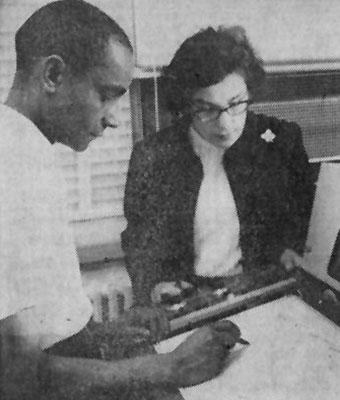
Dolphus Milligan
Born in Brighton, Alabama, in 1928, Dolphus Milligan (left) received a bachelor’s in chemistry from Morehouse College in Atlanta, a master’s in organic chemistry and mathematics from Atlanta University, and a PhD in physical chemistry from the University of California, Berkeley.
After a short stint at Carnegie-Mellon University in Pittsburgh, Milligan came to NIST in 1963. During his tenure, he performed pioneering studies of highly reactive, short-lived molecules, including so-called free radicals, which can damage proteins, cells and DNA. Milligan developed and essentially perfected a technique to imprison these molecules in frozen gas long enough to record their spectra, or chemical fingerprints.
Expanding upon his technique, Milligan and his collaborator Marilyn Jacox (right) detected and characterized more than 50 of these elusive molecules before he died suddenly in 1973 at the age of 45.
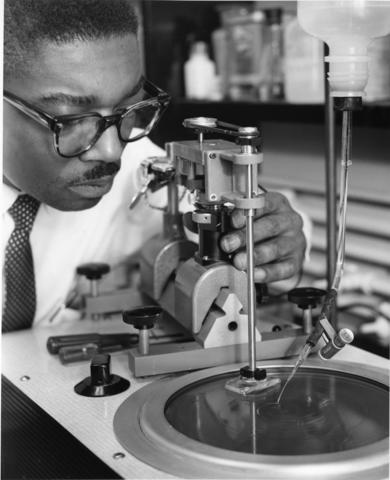
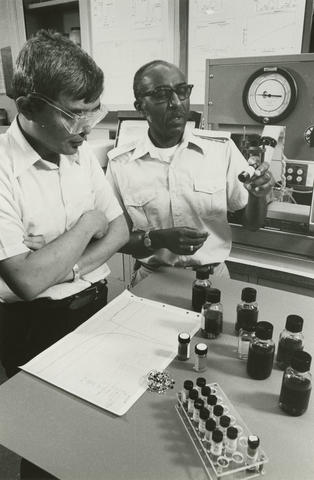
James A. Walker and Avery T. Horton
Walker and Horton were chemists at NIST in the 1960s. They also played a pivotal role in the history of Montgomery County, Maryland.
In 1968, Walker and Horton were refused haircuts at a Gaithersburg, Maryland, barbershop so they filed a complaint with the Montgomery County Human Rights Commission.
The Commission ruled that the barbershop was in violation of the county’s 1962 Public Accommodation Ordinance, which said businesses could not discriminate based on race. The barbershops challenged the validity of the ordinance in court, and the Montgomery Country chapter of the ACLU stepped in to provide legal support to Walker and Horton. This would be the first court test case for the Public Accommodation Ordinance. In 1970, the court upheld the Public Accommodation Ordinance. Walker and Avery’s actions helped to desegregate Gaithersburg barbershops and confirmed the legal standing of local governments to enforce anti-discrimination laws.
James A. Walker
Research chemist James Walker developed test methods that could be used to compare accurately the oxidation stability of rerefined oil with that of a new oil. Walker, along with colleagues Wing Tsang and Douglass Cornell, received a patent for a reactive gas generator in 1980. He passed away in 2016, having received a Bronze Medal of Honor by the Department of Commerce during his career.
Avery T. Horton
Physical chemist Avery T. Horton studied crystal chemistry in the NBS Inorganic Materials Division. He received the first EEO award ever given by the Bureau in June 1970. Horton passed away in 2006.
Videos

